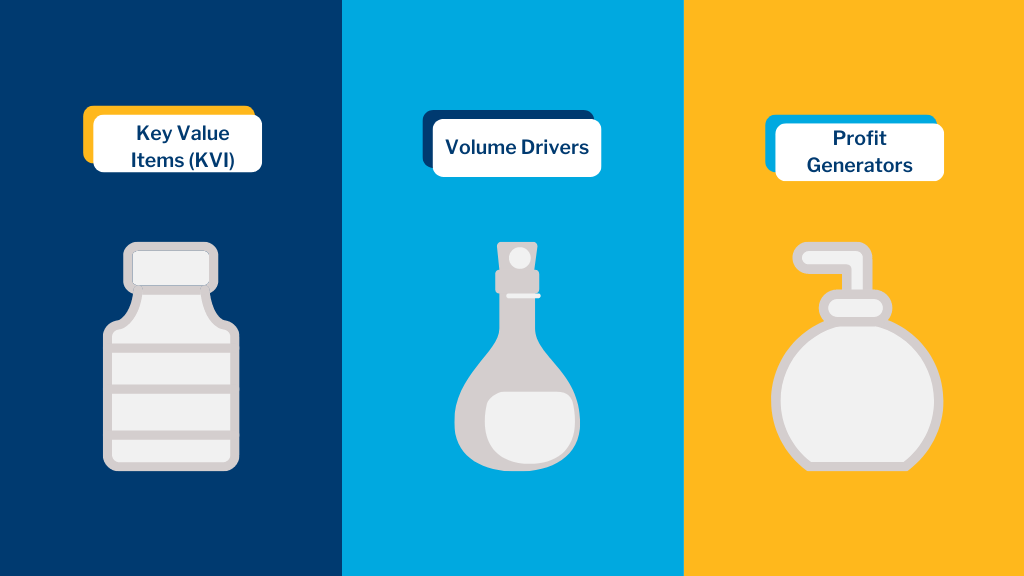

Classifying an e-commerce product catalogue into key categories helps boost sales and increase a company’s profits. The way products are grouped will be based on demand volume, the price and profit generated by each product. However, other factors need to be considered which interfere with consumer perception. This post will explain the key aspects to assess when organising your product catalogue.
Firstly, three essential categories should be used to categorise an e-commerce’s products. Key Value Items (KVIs) are essential products that generate the most user interest. Volume Drivers are items that customers are encouraged to buy once they are in the e-commerce store. Profit Generators are goods or services that return higher profits for the business. To find out more about the characteristics of each group, read the blog post, “Classify your products and watch your profits soar”.
Once you have created the three groups, it is vital to consider the following influential factors:
1. E-commerce audience: demographic characteristics
The traits of consumers in the surrounding area condition which products are classified as Key Value Items. The KVIs will differ from a shop in a small city centre premises serving professionals, to premises located on the city’s outskirts, whose clientele are mainly families. Consumer staples will be different for each population group. The same is true for e-commerce businesses that handle orders for different regions and countries. Therefore, when classifying products, you should consider factors such as your buyer persona’s location, age, gender and household income.

2. Complexity of the online market
The fact that an e-commerce business can sell products from various categories from the same store is also likely to complicate product classification. Also, we need to consider the perception of products on the sales channel concerned or the time of year. Depending on the season or sales channel, the KVIs may vary. The company aims to identify them and achieve maximum profit from them.
It is also advisable to consider how socio-economic factors influence consumers’ needs. One tangible example is the changes in demand caused by the COVID-19 pandemic, which led to supply chain issues, which are still affect companies internationally.
One of the challenges brands and retailers face is managing this tricky situation appropriately, as too many changes in the key article strategy can water down its effectiveness and affect user satisfaction.
3. Pricing strategy and fierce competition
At the same time, different sales and pricing strategies also affect catalogue classification. Items whose price you decide to raise become Profit Generators aimed at less price-sensitive customers. For product category changes to work, it is crucial to know your competitors’ prices and demand levels. Otherwise, you risk users rejecting your pricing strategy.
One effective way to have all the necessary information at your fingertips to adapt to these factors, and achieve optimal product classification, is to use automated pricing tools. These tools can collect and analyse a massive volume of data. The most advanced pricing and catalogue intelligence suites enable you to know how your product range is organised. They also provide information on your competitors’ catalogue products, prices, stock, codes, and descriptions. They also help optimise decision-making and identify potential areas for improvement and opportunities.
Find out how Minderest can take your business to the next level.
Contact our pricing experts to see the platform in action.
Related Articles

AI Agents and Holiday Season: How to Adapt Your Pricing Strategy
Holiday season planning used to revolve around creative campaigns, emotional storytelling, and optimizing the user experience. However, a silent revolution is changing the rules of the game. The rise...
How Surveillance Pricing Works and Its Applications for Your Business
The term "Surveillance Pricing" might conjure images of corporate espionage and price manipulation. However, this initial perception hides one of the most sophisticated and powerful strategies in...